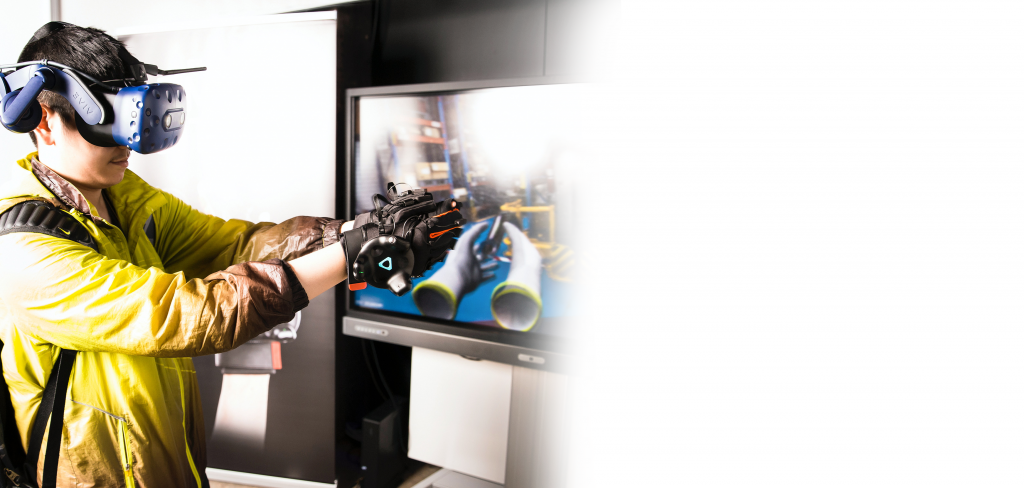
Difference Between Augmented Reality And Virtual Reality | Tinkerly
Augmented Reality (AR) and Virtual Reality (VR) technologies have taken a giant leap forward from rudimentary technology to a full-fledged ecosystem that facilitates a wide range of mainstream consumer/corporate applications, customer experiences, and industrial operations.
A revolution that originated in the Augmented Reality Gaming segment with ‘Pokémon Go’ is now spreading to other sectors like education, real estate, retail, etc. For example, AR and VR technologies are now widely used to enhance the digital experience by combining smartphones and mobility. It can change the customer’s select their products and payment procedures in a big way.
AR and VR technology is also the building blocks of Metaverse. With great power comes great responsibility. Hence, it is crucial to understand the concept of AR and VR and their scope in the present and future of humanity.
What Is AR?
Augmented reality (AR) is a technology-inspired representation of the actual world achieved via digital visual components, music, or other sensory stimulation. It’s becoming more popular among companies in business with mobile computing and professional applications.
According to Poplar, an Internet marketing service in London, England, by 2022 there should be approximately 3.5 billion AR users in the whole world.
Augmented Reality(AR) is more efficient as a commercial and gaming instrument than virtual reality. Almost everyone with smartphones has access to AR Technology. It is the epicentre of the businesses that deal with mobile computing and commercial apps.
With constant development in data collection and data analysis, insightful and reliable conclusions are being derived with the help of AR. Analyzing such big data may help organizations make better decisions and acquire insight into customer purchasing habits, among other things.
What Is VR?
The use of computer technology to build simulated surroundings is known as Virtual Reality. The user immerses themselves in a three-dimensional experience in virtual reality. Users affiliate themselves with the elements of this 3D Environment, interacting with each other rather than watching digital displays.
VR is very hardware-intensive, unlike AR, which requires a smartphone to access. VR requires the use of the headgear and controllers to immerse yourselves in the virtual space. The better the sensors, headgear, and hardware used, the more immersive VR experiences will get.
Virtual reality success is heavily dependent on the careful integration of highly interactive Software Experiences and Applications with comfortable headgear and powerful hardware. Because of this, it is less significant and complex than the Augmented Reality Framework.
Difference Between AR & VR
While both technologies use virtual environments, AR and VR use distinct underlying components and target different audiences.
In Virtual Reality(VR), the user nearly always wears an eye-covering headgear and headphones to replace the actual environment with the virtual one. VR aims to isolate the user from the real world as much as possible. While virtual reality has some commercial uses in product creation, teaching, architecture, and retail, most of today’s VR applications focus on enjoyment, particularly gaming.
Augmented reality(AR), on the other side, combines the virtual and actual worlds. In most apps, the user does this by pointing the phone’s camera at a location of interest and creating a live broadcast of that scenario on the screen. The screen contains useful information, such as the direction of repairs, GPS data, and analytical data.
In a nutshell, AR v/s VR is-
| AR | VR |
| AR is not hardware-intensive. All it requires is a smartphone. | VR relies heavily on headsets, headphones, and other hardware. |
| The system adds to the real-world scene. In the actual world, the user is always aware of his or her presence. | VR provides a fully immersive experience. The visual senses of the user are in control of the system. |
| This technology allows the user to participate in the activity to some extent. | With this technology, the users are fully immersed in a virtual space of their preference. |
| AR is 75% real and 25% virtual. | VR is 25% real and 75% Virtual. |
| AR enhances both the real and virtual worlds simultaneously. | VR enhances the operational reality of the virtual world. |
Future Of AR & VR
AR and VR have a bright future ahead, with numerous new capabilities and broad adoption expected in the coming decades. More popular acceptance will be driven by improvements in video quality, computing power, mobile bandwidth, and advanced AR and VR technology, with lower development costs and complexity providing more alternatives for developers to explore. Joysticks and other controls will gradually replace by systems that monitor eye movement and facial gestures.
In the future, AR and VR will have countless uses in every business. When it comes to training, Virtual Reality will play a significant part in educating candidates and improving the quality of education. On the other hand, Augmented Reality, will be widely adopted in the retail and e-commerce industries, where it will assist customers in making product choices. It will provide users with the experience of trying the dresses before buying. AR and VR will change people’s lives because of their wide range of applications.
Summing Up!
In this blog, we have learned about the concept, differences, and the future of AR and VR Technology. Moreover, we grasp the tremendous impact these technologies will have on humanity. Tinkerly’s coding courses are carefully curated to prepare your child for the next-gen jobs.
This content was originally published here.


